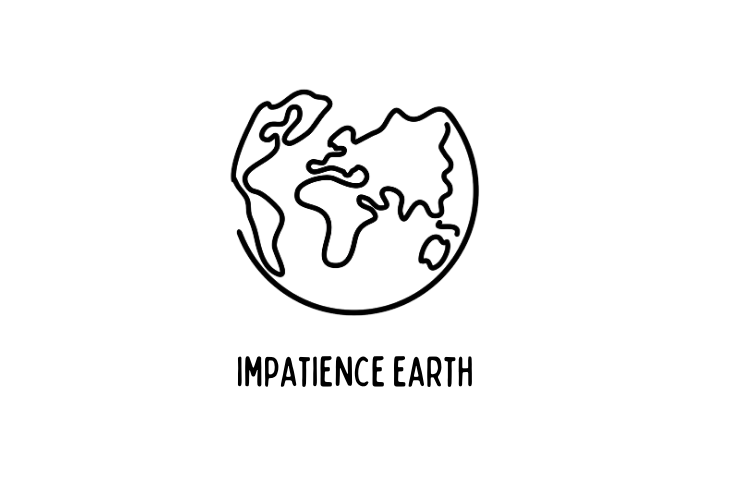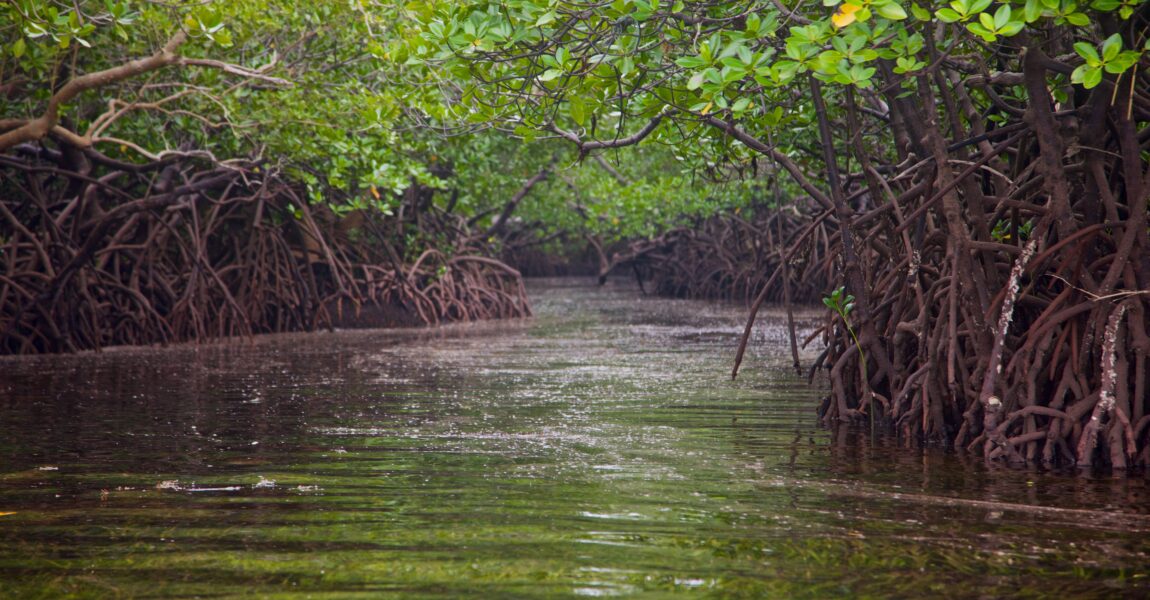Philanthropy and climate change: A conversation with Impatience Earth
Impatience Earth is a pro-bono climate philanthropy consultancy that educates, challenges and inspires wealth holders to take bolder funding decisions to address the climate emergency.
We interviewed Yasmin Ahammad, the Co-Managing Director of Impatience Earth to gather her insights on climate philanthropy and understand what influences donors when they are considering which projects to fund.
Here’s what Yasmin had to say…
1. What motivates philanthropists and foundations to fund projects that tackle climate change?
The public’s awareness of the climate crisis has skyrocketed in recent years, thanks to the tireless efforts of climate activists and the growing coverage of alarming IPCC research findings. As heat waves scorch entire cities and floods devastate communities, the reality of climate change hits closer to home more than ever before. Urgency has become the driving force for philanthropic donors to invest in the fight against climate change, and their support is crucial to creating the change and momentum we need.
At Impatience Earth, donors typically approach us with a keen understanding that the climate crisis is the most pressing issue of our time. They recognize that the impact of climate change will undo many of the gains made in other areas such as health, education, conservation, social justice, and human rights. These individuals, foundations, and companies feel a collective responsibility to act while there is still time to avoid the worst climate scenarios. They may support climate change as a new strand of their grant-making or incorporate it as a lens through which they view their existing projects.
“We have seen a particular interest in mangrove and other blue carbon projects like seagrass and saltmarshes, because it is easy to understand the numerous co-benefits of investing in such nature-based solutions.”
Why philanthropy and what inspires philanthropists right now?
Philanthropy is uniquely positioned to act because it can provide the seed capital for bold and innovative movements, ideas, and initiatives to experiment, scale, and thrive. Unlike government or corporate institutions, philanthropy can afford to take risks and fund projects flexibly and nimbly, filling critical gaps in support.
We have seen a particular interest in mangrove and other blue carbon projects like seagrass and saltmarshes, because it is easy to understand the numerous co-benefits of investing in such nature-based solutions. Donors focused on reducing carbon emissions are attracted by the carbon sequestration potential of mangroves and seagrasses, while those who are passionate about biodiversity are motivated to protect and restore coastal ecosystems for the benefit of marine species. Donors with a focus on building community resilience find mangroves appealing as a natural barrier to disastrous storm surges and coastal erosion, and as a source of livelihood opportunities through eco-tourism, healthy fisheries and potential access to carbon markets.
“We have seen a particular interest in mangrove and other blue carbon projects like seagrass and saltmarshes, because it is easy to understand the numerous co-benefits of investing in such nature-based solutions. Climate justice, land rights, youth, and women’s rights are popular cross cutting concerns, while policy, capacity building and conservation are key approaches.”
Aside from blue carbon approaches, we see a lot of appetite amongst our clients to learn about other carbon sinks such as peatlands and forests, followed by agriculture and food systems as a whole. Climate justice, land rights, youth, and women’s rights are popular cross cutting concerns, while policy, capacity building and conservation are key approaches.
2. What influences philanthropists’ / foundations’ decision making when assessing quality of projects in terms of how they gauge climate impact, but also co-benefits?
Each donor is different in how they assess which organisations or projects to fund, and how stringently they set the criteria. But generally speaking, they share a few common questions that help them assess the quality of a project:
How well does it align with our philanthropic mission and values?
If climate justice is a core value of the donor, for instance, they will assess the project based on whether it advances climate justice by putting more power and resources into the hands of those most affected by the climate crisis. Similarly, if they care deeply about biodiversity, they will want to make sure that the project is led by experts who can advise on planting the right trees in the right way to benefit the local ecosystem.
What is the impact of the intervention?
Donors will consider the project’s potential to create positive environmental and social outcomes, depending on their core concerns, whether that be reduction in carbon emissions, or the extent to which communities have ownership and gain benefit from the project. Some donors like hard metrics to demonstrate the impact of the project, such as total carbon sequestered over time, number of trees planted, number of jobs created, or the percentage change in community attitudes towards mangrove restoration. While these example metrics are useful, we try to educate donors that impact measures are best defined by the project leads and communities themselves, so that they are monitoring and reporting what is most useful and important to them.
What is the sustainability of the project?
Philanthropists will consider whether all the conditions are in place to ensure that the mangroves will be thriving and delivering their benefits long after they have stopped funding the project. This includes having the right tree species and planting methods, community buy-in through education and alternative livelihood opportunities, and a clear plan for ongoing funding, whether through donations or income.
What is the track record of the organisation?
Donors will look closely at the organisation or individuals leading the project to assess their expertise and capacity to successfully implement the project. They might do this by reviewing impact reports, holding short interviews with the project leads, or reaching out to other funders for references.
3. Following on from the above: what information can practitioners make available, and in what format, to better showcase their projects and help this decision-making?
In the process of making a decision, clear communication materials are essential. Donors usually start by checking out a website before they even consider asking for a proposal. That is why it’s a good idea to include compelling materials that showcase the impact of your work.
Telling captivating stories and providing clear impact metrics are crucial to demonstrating the project’s effectiveness and track record. It’s also important to include financial information, such as the organisation’s annual budget, so that donors can determine whether their usual grant size is too much for the organisation to handle or whether they are better set to make a small contribution to a larger pool of resources. It’s also important to highlight the individuals who are behind the project, their skills and backgrounds, and to make their contact information publicly available so that donors know who they can reach out to with any questions.
If and when invited for a proposal, then pay close attention to the guidelines, especially on the maximum pages they would like. I’ve learned that philanthropists and small foundations typically have very little time to make a number of complex decisions, so the easier you can make this process by being succinct and clear, the better.
.
4. Moving away from philanthropists and to Impatience Earth – who are you, and what services do you provide?
“We see ourselves as climate knowledge and relationship brokers – helping donors access the incredible array of climate expertise of practitioners, activists, and academics to help make sense of the climate emergency in a way that resonates with them.”
We are a small team of advisors with backgrounds in climate change, biodiversity, international development, social justice, philanthropy and entrepreneurship. We are incredibly passionate about what we do, and how we see our work contributing towards a much more equitable world for everybody. We set out in 2020 to increase the amount of philanthropic capital being directed to climate change, but we also want to see funding going to actors who have been traditionally overlooked and underfunded, and to help shift philanthropy towards a more trust-based approach and in support of climate justice.
We see ourselves as climate knowledge and relationship brokers – helping donors access the incredible array of climate expertise of practitioners, activists, and academics to help make sense of the climate emergency in a way that resonates with them, and then move forward on acting on climate with confidence by helping them develop strategies, and connecting them to co-funders and potential grantees.
The learning journey is a central component of our work, which is a bespoke series of intimate sessions with experts where they can dive deep into a subject area and ask lots of questions. We’ve found that learning is critical; clients who want to skip the learning and go straight to recommendations on who to fund don’t seem to end up committing to climate in the long-term.
5. What are the most common questions that you are asked? Have any common themes emerged that you think need to be better answered/communicated by practitioners?
The most common question we hear is “where can we best make an impact?”
In the climate emergency, there is no straightforward answer to this question, because it is a complex global systemic crisis. Unfortunately this is where a lot of potential donors to climate change get stuck, because it seems so overwhelming, when in fact there are so many ideas, initiatives and approaches in need of funding that will collectively deliver the change we need.
We help each client craft an answer to this question that makes most sense to them through learning and reflection. There are a number of factors that will influence the answer, such as what values are core to the foundation, where they are drawn to funding geographically, where they think change comes from (e.g. top-town, bottom-up, or both), and which sectors and approaches resonate most with what they have supported so far and want to focus on in future.
For practitioners seeking funding, it is important, unsurprisingly, to help funders clearly understand how their grants will make a difference. This stems from you understanding the broader change you are working towards in the climate context and beyond, whether it’s building long term community resilience, strengthening local biodiversity or building the movement for climate justice. While it’s important to outline the how (activities) and the why (the problem statement) to demonstrate your capabilities in planning a project, it is the outcomes that will inspire donors to invest in you and help them realise their own impact.
You can find out more about Impatience Earth and their work on their website.



